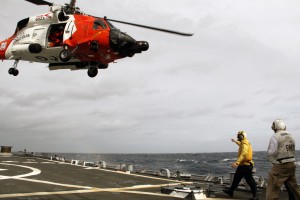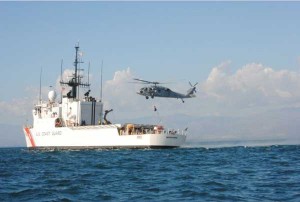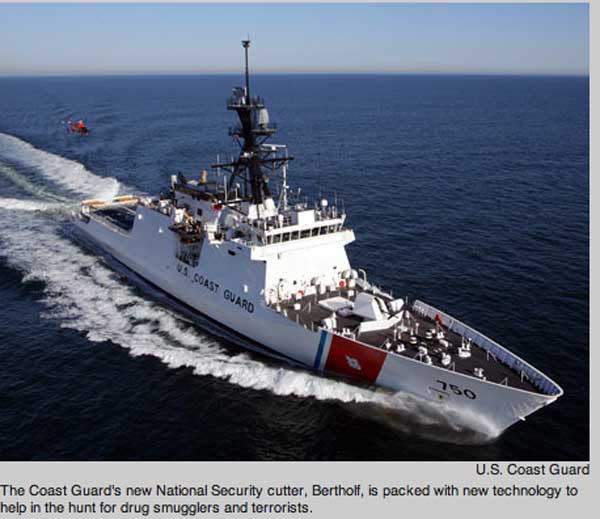2014-01-15 The USCG is struggling to recapitalize its cutter fleet.
The National Security Cutter is an effective ship as part of a maritime security package but will not be bought in the numbers required for the USCG’s global role.
The smaller cutter, the Offshore Patrol Cutter, is struggling even to get its head above the water line.
The Department of Homeland Security is having serious difficulty to lead the way in shaping an effective global security role for the USCG, working with US and coalition forces.
For the USCG is part of the US military, not simply a partner to US customs.

Greater operational integration with the USMC and the USN would be facilitated by building and deploying a larger USCG fleet.
All three services operate air assets and ISR connectors to operate over the oceans and to protect the sea lines of communication and to protect the conveyer belt of goods and services traveling by sea and entering the world’s ports and internal waterways.
The ability to operate common systems and to land the maritime services air assets across the fleet of USCG, USMC and USN floating assets are crucial to mission effectiveness. The larger USCG cutter is especially capable of the kind of integration with an ARG-MEU which could make the USCG as forward presence security force, able to link to various USMC and USN scalable assets.
This is especially the case as the ARG-MEU under the influence of the Osprey is disaggregating its assets and operating its core three ships over a much wider area of ocean.
As the USN-USMC teams disburses its assets, having USCG cutters as key elements able to work with those assets would be a very smart investment in the future.
For example, it would be interesting to test Ospreys and their ability to land and take off the NSC. The USMC has developed matting which can deal with heat from the Osprey, and by making USCG cutters part of the deployed lilly pads in the Pacific, a significant expansion in overall security and defense capability could be achieved.

Because the USCG deploys mission ready for security operations, unlike the LCS crews which would need USCG personnel on board to be able to do such missions legally, it can function as the tip of the spear when necessary.
Cross training on a regular basis to link ISR and C2 systems as well as rotating air systems across the maritime services can provide a significant boost to capability on a very cost effective basis.
But the USCG needs the appropriately sized and sea worthy vessels to be able to play this role.
It is a classic case of penny wise and pound-foolish if the USCG does not get full funding to recapitalize its cutter fleet.
And that is the most likely outcome of the current trajectories of Congressional and Administration actions.
Editor’s Note: This argument is presented more fully in our book Rebuilding American Military Power in the Pacific: A 21st Century Strategy, chapter 7 entitled: “Protecting the Conveyer Belt and Preparing for SLOC Defense: A Key Foundation for a 21st Century Strategy.”
https://sldinfo.com/rebuilding-american-military-power-in-the-pacific-a-21st-century-strategy/


